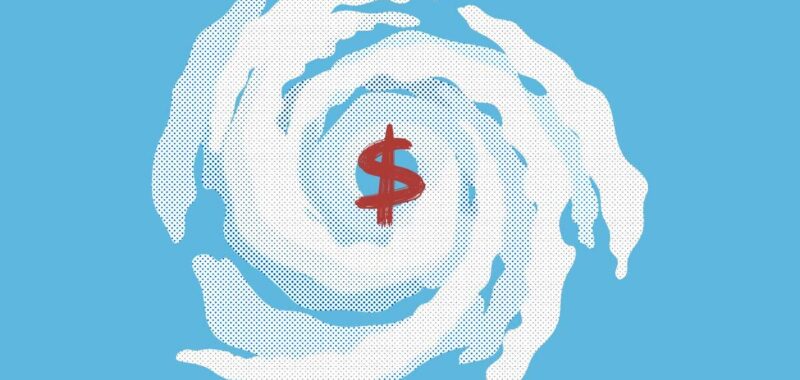Similar to past experiences, Hurricane Helene may lead to 5% of mortgage borrowers in affected areas becoming delinquent but eventually self-curing over the next 12 months, according to a Bank of America (BofA) analysis.
The hurricane, which made landfall in Florida in late September, also impacted parts of North Carolina, South Carolina, Virginia and Georgia. As of this week, the death toll has surpassed 230 and thousands of homes, many without flood insurance, have been destroyed. Just days later, Hurricane Milton struck Florida, making landfall in Sarasota County with winds reaching 120 mph.
According to the BofA report, there are 833,268 mortgages originated in the affected regions and securitized into residential mortgage-backed securities (RMBS), totaling $96 billion in unpaid principal balance (UPB). Most of them are in Florida (53%), followed by North Carolina (19%), South Carolina (18%), Georgia (8%) and Virginia (3%).
The hurricane impacted 3,449 RMBS deals, with credit risk transfer (CRT), nonqualified mortgages (non-QMs), and second liens/home equity lines of credit having the highest exposure. The analysis shows that the delinquent balance on these loans — those more than 30 days overdue — is currently about $2 billion.
Researchers used Harvey, Irma and Ida as references for prior hurricanes and their impacts on the RMBS market. In these cases, delinquencies increased to 5% to 10%, varying by sector, and then declined over time.
Insurance and inventory
An alarming statistic is that most homeowners in these areas are not insured by the private insurance market or by the National Flood Insurance Program (NFIP). When considering the five states affected by Hurricane Helene, the report shows that only 14.2% of homes were covered.
This includes 17.6% of homes in affected counties in Florida, 7.5% in Georgia, 0.6% in North Carolina, 0.4% in South Carolina and 0.7% in Virginia.
In fact, the researchers believe that rising insurance costs, property taxes, homeowners association fees and condominium assessment charges were drivers of the buildup of for-sale inventory in these areas.
Across the 100 largest U.S. metro areas, 13 have had positive inventory change since 2019. Eight of these are in Florida, including the three major metros affected by Hurricane Helene: Cape Coral inventory picked up by 41%, Tampa by 17% and North Port by 14% during the period. In stark contrast, there was average inventory decline of 32% at the national level.
In Tampa, data from Altos Research shows that new listings and pending home sales have fallen off a cliff since Milton’s formation.
“We think the condition will be even worse due to the Hurricane and will continue to be a headwind for home prices,” the BofA researchers said.
Experts told HousingWire they are concerned about further increases in insurance costs due to hurricanes Helene and Milton. This could threaten consumers’ financial stability and depress home sales amid challenging mortgage and real estate markets.
CoreLogic estimates losses from Hurricane Helene at $30.5 billion to $47.5 billion, a total that includes residential and commercial properties. Meanwhile, the company’s pre-landfall estimate for Milton encompassed 500,000 homes at risk, with a combined reconstruction cost value of about $123 billion across the Tampa Bay and Sarasota metro areas.
Regarding Milton’s impacts, CoreLogic chief economist Selma Hepp said in a statement that “homeowners in any affected markets who didn’t have appropriate insurance damage coverage may be losing all of their hard- and long-earned home equity on which they relied for a financial buffer in times of economic hardship.”
“Investors will also become more cautious about operating in markets that are perceived to be at an increased risk of negative climate events, which could further weaken an already struggling property market,” Hepp added.

